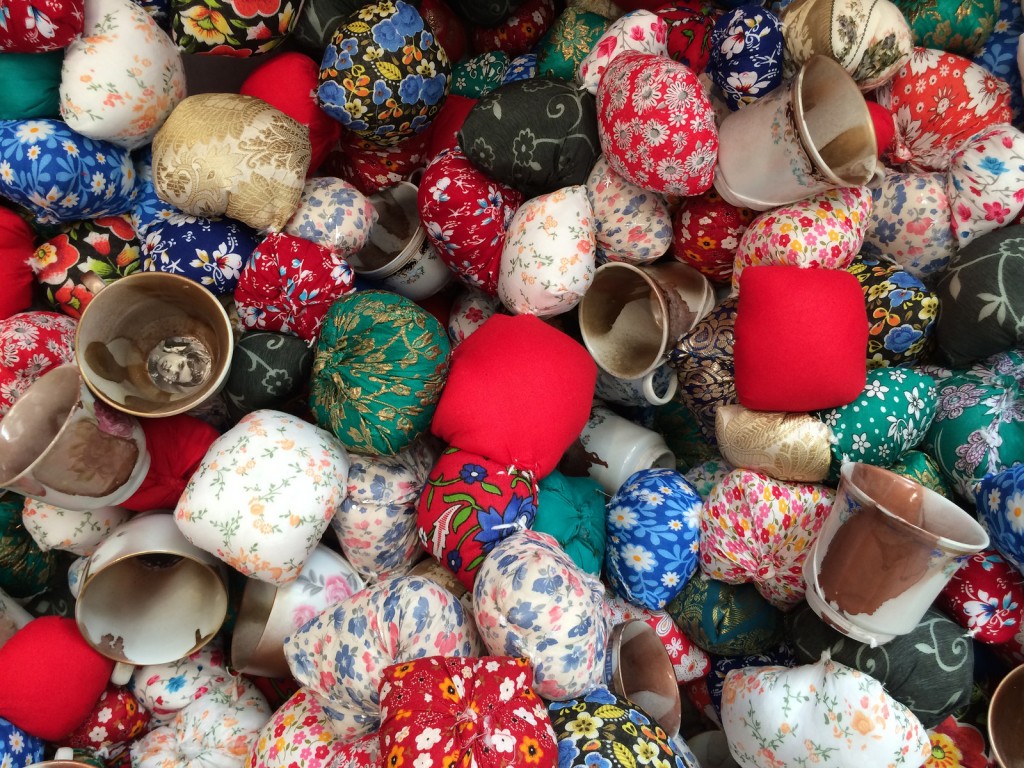Some photos from venues in the city that are part of the Colombo Art Biennale 2014, taken on 31st January 2014. Venues included the Lakshman Kadirgamar Institute, JDA Perera Gallery, Lionel Wendt & Harold Pieris Galleries, Goethe-Institut and the Post Graduate Institute of Archeology (PGIAR).
Sharni Jayawardene’s exhibition at Colombo Art Biennale 2014 (on display at JDA Perera Gallery) is grounded in the work she created for Groundviews, as part of the 30 Years Ago project. See 30 Years Ago – The Next Page and the full selection of her work on the dedicated 30 Years Ago project site. The videos are embedded below and the photos on display can be seen on our Facebook page.
Sachini Perera and Natalie Soysa are also exhibiting at the Colombo Art Biennale 2014 works created for and first exhibited as part of the 30 Years Ago project, on display at the JDA Perera Gallery. Click on our Facebook page for some images from their installation.
See Stories of 43 women: I WAS, I AM for the full spectrum of their work and click here for a trailer of their production.
Extremely pertinent to understanding their productions are brief articles On Black July, I was 3 years old by Natalie Soysa and Much left to untangle yet by Sachini Perera.
There is an interesting installation for CAB 2014 by Thor Mcintyre-Burnie for at the JDA Perera Gallery inspired by the Weliveriya water riots and in particular, informed by the the archive of tweets around the riots on Groundviews.
Also by the same artist as part of CAB 2014 is a sound installation at the Goethe-Institut, in large part responding to the Weliveriya water riots and again using our tweet archive as source material for the art.
See our Facebook page for for more images from this installation or click on our Flickr set.
A short video of the installation is embedded below – the voice you hear is an untrained actor, reading out tweets generated around the time of the riots, in response to live events on the ground or broadcast / news or social media reportage around the riots and its aftermath.
Finally, History-Scope: Diaspora Stories by Tanuja Thurairajah was screened on 2 February as part of Colomboscope 2014, at the Rio Cinema in Colombo. Tanuja’s productions were part of the 30 Years Ago project, alongside those by Sachini and Natalie.
All of the videos can be seen in high-definition here and the respective descriptions can be accessed here.
As noted by Tanuja,
The Black July Pogrom, apart from it bearing immense political significance is one occurrence that has left an unforgettable mark on the psyche of the Tamils at large. In the diasporic context, it continues to be used as a constant example that is symbolic of the disintegration of hopes and the severance of relations between the minority Tamils and the majority Sinhalese. While this has been an overpowering sentiment, there have also been victims of the pogrom who were able to understand that the real issue was indeed the Government’s complicity against a section of its own people and not a racially purported incident stemming from within the Sinhalese masses.
The project recorded perspectives of the 83’ pogrom by the Sri Lankan diaspora living in Switzerland & France; stories from those who arrived after the Pogrom; who were either directly or indirectly affected and/or having family/ friends who were affected by it. In terms of including Sinhalese and Muslim voices from the diaspora and their reflections on the incident/violence we were able to only obtain a minimum of one each. Most of whom we approached failed to re-call the incident or were not keen to share their views. In terms of capturing the sentiments of the ‘youth diaspora’ there was once again a lack of knowledge, or a lack of interest in sharing views from those who were aware of the incident, which is something that is worth taking note of. Some of the practical difficulties faced during the project were scheduling appointments with contacts due to the short project span as well as the process of story-telling itself where people found it difficult to focus on the event and thoughts around it. Interestingly, the diaspora focus related to the event seemed to be overpowered by the prison massacre and our attempt through this project to focus on a variety of perspectives was received with interest.
The project collected and edited ten photo-montage stories and two video stories, including the stories of five women.
